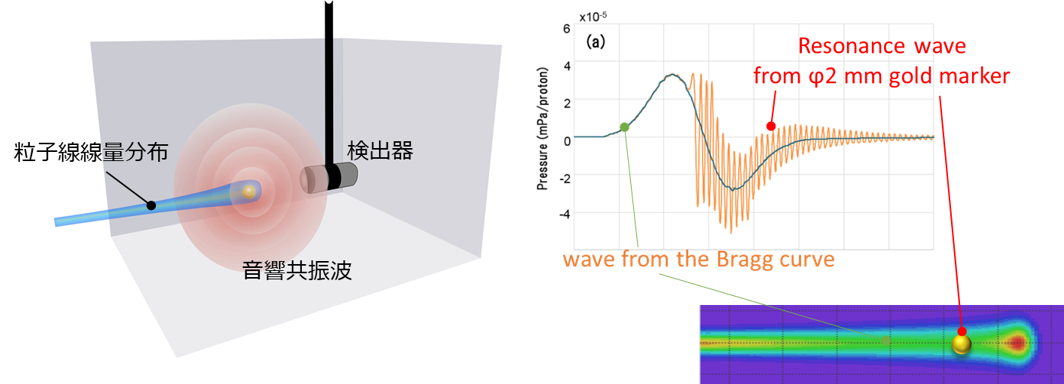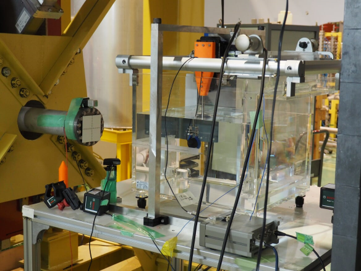Proton range detection using an ion-acoustic technique
A major challenge concerning proton beam therapy that may not be ignored is a level of uncertainty about where in the patient’s body the proton beam is delivered. Since radiation is invisible and the human body changes every day, even meticulous simulations cannot entirely dispel concerns over whether or not the beam is delivered to the targeted malignant tumor.
Our laboratory collaborates with Bogazici University (Turkey) and Kyoto University to develop technology to reduce uncertainty about irradiated positions through real-time monitoring of pressure waves that result from proton beam irradiation. Our numerical simulations and experiments using accelerators have shown that unique resonant waves are emitted under certain conditions1). Going forward, we will explore the application of this phenomenon of resonance in a clinical setting through ongoing detector improvement, simulations and experiments.
1) T. Takayanagi, T. Uesaka, M. Kitaoka, M.B. Unlu, K. Umegaki, H. Shirato, L. Xing, and T. Matsuura, A novel range-verification method using ionoacoustic wave generated from spherical gold markers for particle-beam therapy: a simulation study. Scientific reports, 9(1), 1-11, (2019)

Resonance wave generated by proton irradiation

Experiment of ion acoustics